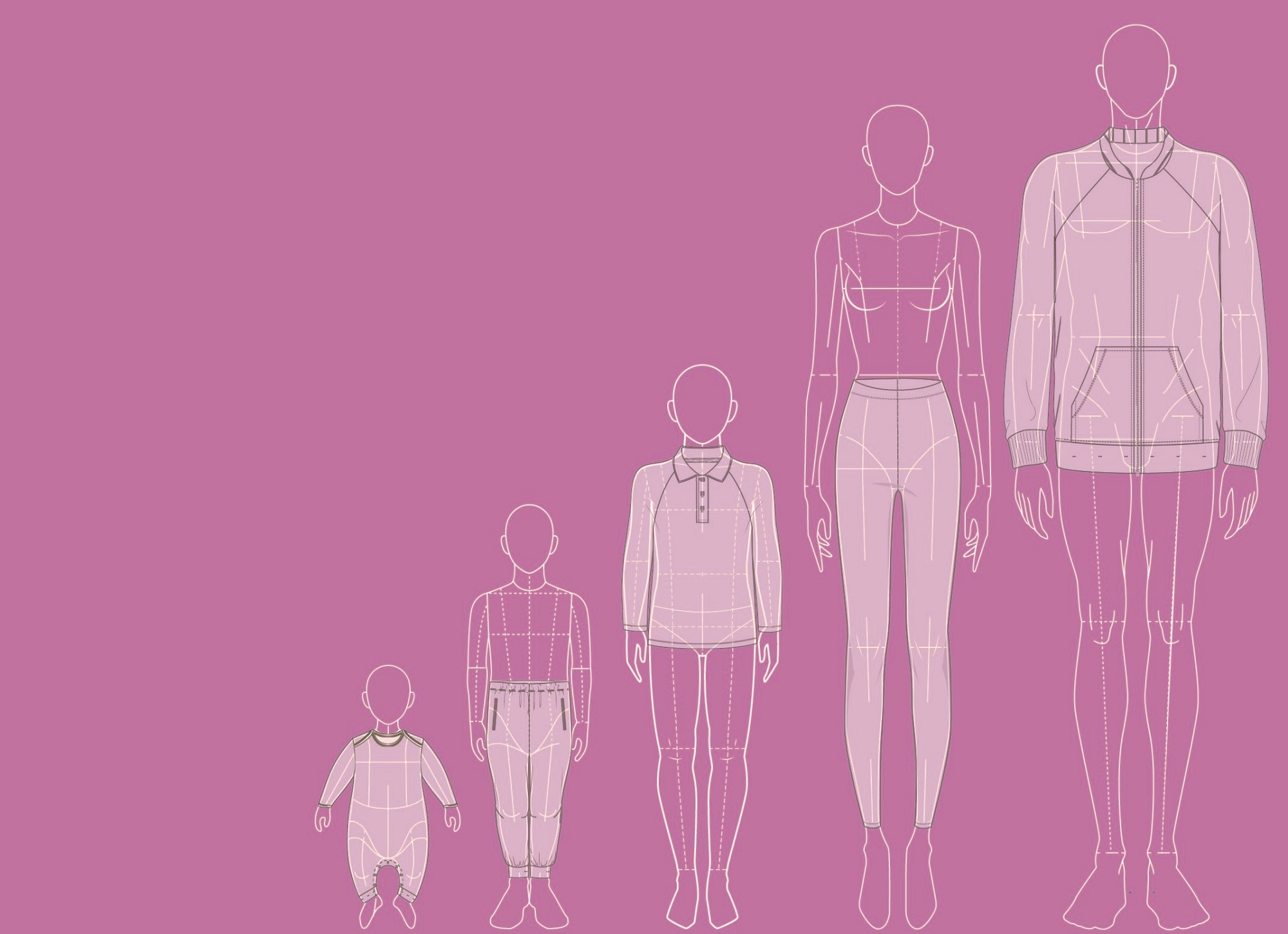The most common question asked by prospective Pattern Room clients is what the critical difference between “size” and “fit” is and how to ensure consistency is maintained across apparel offerings.
During extensive conversations with sportswear and fashion design companies, a lot of time is spent iterating that size and fit are two completely different concepts of measurement, which very rarely go hand in hand.
While “size” is defined by classes, typically numbered or lettered, into which garments are divided according to how small or large they are, “fit” constitutes the way an article of clothing hangs or molds to the wearer’s body shape and is generally categorized by six distinctly different terminologies:
Compression fit mainly caters to athletes wanting to mitigate or eliminate any drag or resistance from sporting attire. Proper compression fit wears like a second skin, with muscle definition visible through garment material.
A tight fit is preferred by most amateur athletes. It’s snug enough to minimize excess material getting in the way of performance, but not so much that close movement or agility is affected. This fit still highlights body tone, but it is much less specified than compression fit.
Slim fit is understood to be the fit that defines and outlines shape by accentuating features but also keeping the mystery alive. Usually, we find that sporting enthusiasts and weekend warriors typically gravitate to this fit first.
A Regular fit is the vanilla ice cream of fits. It’s true, trusted, and dependable. Predictably comfortable, a regular fit is your “every day” T-shirt or pair of pants. Whether they’re worn walking down the street or to a backyard barbecue (once we’re allowed to have social gatherings again), you always know what you’re going to get from a regular fit.
Loose fit is the near ultimate relaxation fit. There is very little garment structure at all, and wearers feel no restrictions from the material. Loose fit lives on the couch at home or on long-haul flights when comfort is king.
An oversized fit is the ultimate relaxed fit. Very loose-fitting, the garments have no shape against the body, meaning no restriction at all. This is the fit which is often used in streetwear, where shape gives way to form.
When considering fit versus size, the key for understanding is that a person will be able to wear the same size (e.g., large) in each of the six fits.
However, each will provide a different shape to the wearer (the fit), for various purposes. The sleeve length, the collar, the hem length, etc. will all be reflective of the size.




